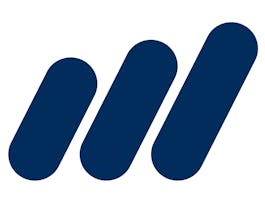Leveraging the visualizations you created in the previous course, Visual Analytics with Tableau, you will create dashboards that help you identify the story within your data, and you will discover how to use Storypoints to create a powerful story to leave a lasting impression with your audience.



Creating Dashboards and Storytelling with Tableau
This course is part of Data Visualization with Tableau Specialization


Instructors: Govind Acharya
Sponsored by Coursera Learning Team
69,185 already enrolled
(1,021 reviews)
Recommended experience
What you'll learn
Combine the data and follow the best practices to present your story
Create calculated fields for KPIs to build a figure that will be used to measure progress in the data
Assemble a dashboard
Analyze concepts and techniques for compelling storytelling with data
Skills you'll gain
- Performance Measurement
- Data Quality
- Performance Metric
- Business Intelligence
- Business Intelligence Software
- Dashboard
- Data Visualization
- Stakeholder Engagement
- Business Analytics
- Data Storytelling
- Data Analysis
- Tableau Software
- Business Metrics
- Analytics
- Key Performance Indicators (KPIs)
- Interactive Data Visualization
- Data Strategy
- Data Presentation
- Statistical Visualization
- Data Visualization Software
Details to know

Add to your LinkedIn profile
4 assignments
See how employees at top companies are mastering in-demand skills

Build your subject-matter expertise
- Learn new concepts from industry experts
- Gain a foundational understanding of a subject or tool
- Develop job-relevant skills with hands-on projects
- Earn a shareable career certificate


Earn a career certificate
Add this credential to your LinkedIn profile, resume, or CV
Share it on social media and in your performance review

There are 4 modules in this course
Welcome to the first module of this course! In the following modules, you will learn and work with concepts, tips, and techniques to help you explore data, identify meaningful findings, and then explain them through the power of data visualization and storytelling. In this module, you will be able to determine the who, what, why, and how of the story and discover the importance of planning before you start. You will be able to interview your stakeholders and assess your audience to find the right story in the data. By the end of this module, you will be able to define what a story is and build a basic framework for presenting your story. Let's get started!
What's included
11 videos7 readings1 assignment1 peer review1 discussion prompt
Welcome to Module 2. In this module, you will identify the key metrics that will provide the answers to your business question. You will develop an understanding of the types of ways KPIs can be visualized. You will create calculated fields for KPIs to build a figure that will be used to measure progress in the data. By the end of this module, you should be able to set thresholds and create alerts to trigger a decision. We will also discuss the topic of quality and constraints of the data.
What's included
6 videos1 assignment1 discussion prompt
Welcome to Module 3. In this module, you will go from learning Tableau's six best practices for dashboard design. By the end of this module, you should be able to apply hierarchies, actions, filters, and parameters within Tableau. You will also review five videos associated with the topic and discover how to uncover the story in the data and be able to frame your story.
What's included
7 videos2 readings1 assignment1 peer review1 discussion prompt
Welcome to Module 4. Although this course focuses on Tableau, we will look at a wider range of examples and techniques to help you become a better data storyteller. By the end of this module, you should be able to leverage concepts and techniques designed to help you become a more focused and compelling storyteller with data as the foundation. We will discuss ways to avoid unintentionally creating false narratives with good data. You will also learn about what neuroscience research tells us about stories, audience engagement, and decision drivers. You will use structural story elements to help improve the relatability of the story and explore ways design and textual elements can affect the emotional tone of a story. Lastly, you will learn how to frame and format the data story based on your design checklist. Let's get started!
What's included
17 videos3 readings1 assignment1 peer review2 discussion prompts
Instructors

Offered by
Why people choose Coursera for their career




Learner reviews
1,021 reviews
- 5 stars
73.18%
- 4 stars
20.64%
- 3 stars
4.50%
- 2 stars
0.88%
- 1 star
0.78%
Showing 3 of 1021
Reviewed on Apr 22, 2018
Its a good Course to get understanding regarding Tableau Story telling ,This course covers start to end aspects of story telling with Tableau.Its a very good course to move forward in Tableau
Reviewed on Jul 23, 2020
I thought Tableau would be difficult but this course series made it very easy. I have learnt new skills which will be useful in my career for sure. Thanks a lot.
Reviewed on Aug 26, 2017
Very well taught and straigh to the points. Also liked to have different speakers throughout the module: it is refreshing. Thanks and keep it up !
Recommended if you're interested in Data Science

Corporate Finance Institute

Corporate Finance Institute

Northeastern University

Open new doors with Coursera Plus
Unlimited access to 10,000+ world-class courses, hands-on projects, and job-ready certificate programs - all included in your subscription
Advance your career with an online degree
Earn a degree from world-class universities - 100% online
Join over 3,400 global companies that choose Coursera for Business
Upskill your employees to excel in the digital economy



